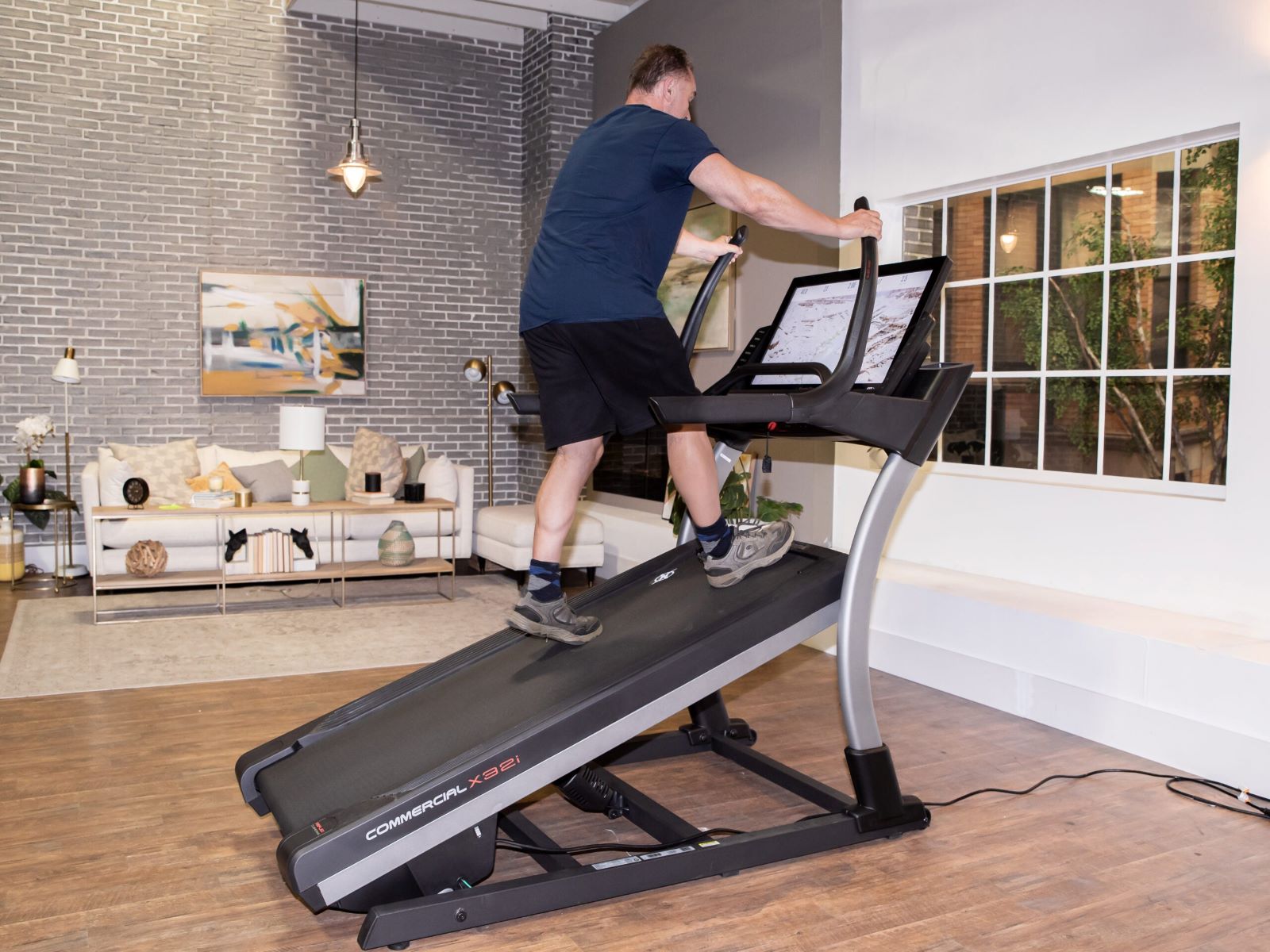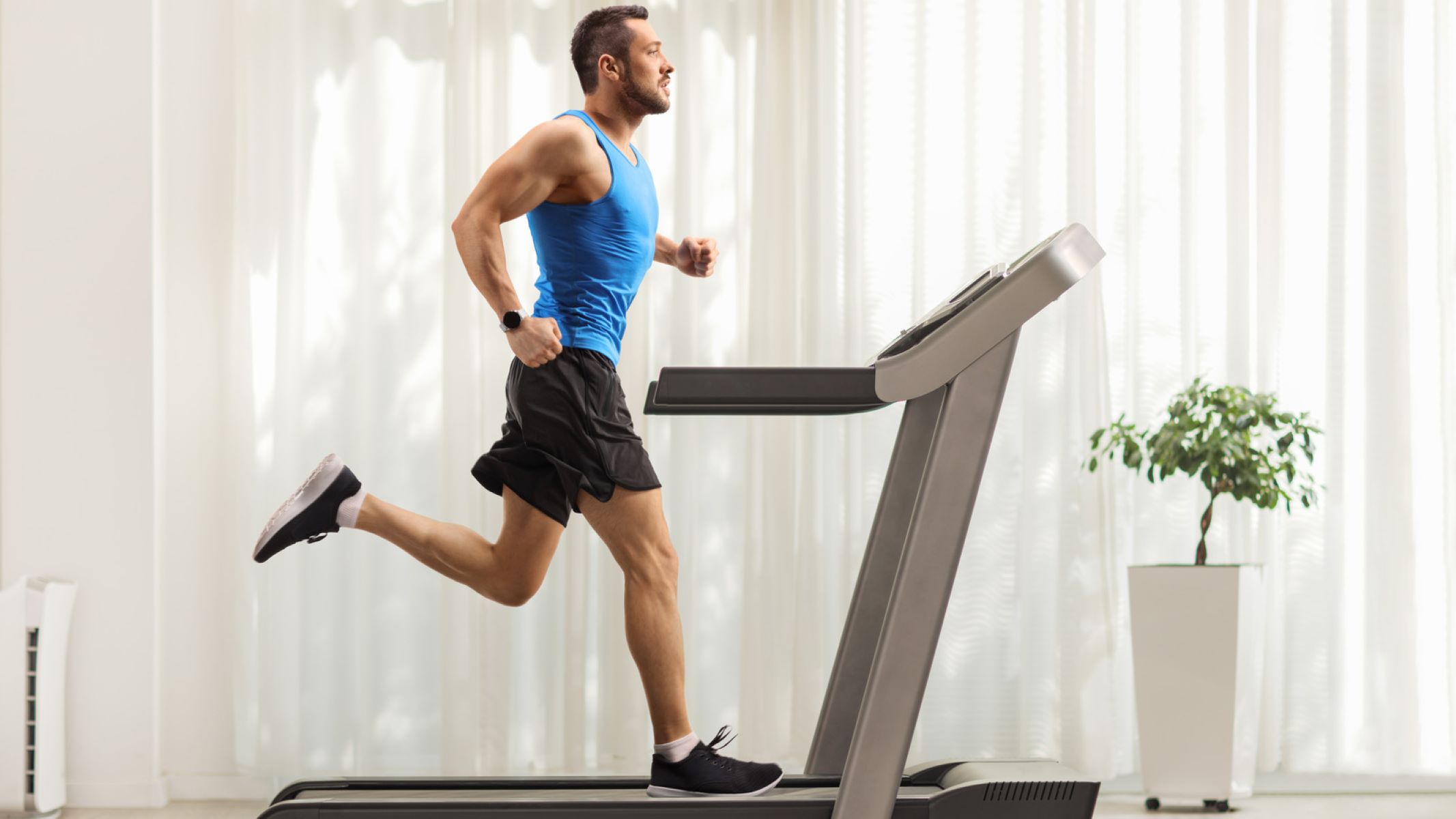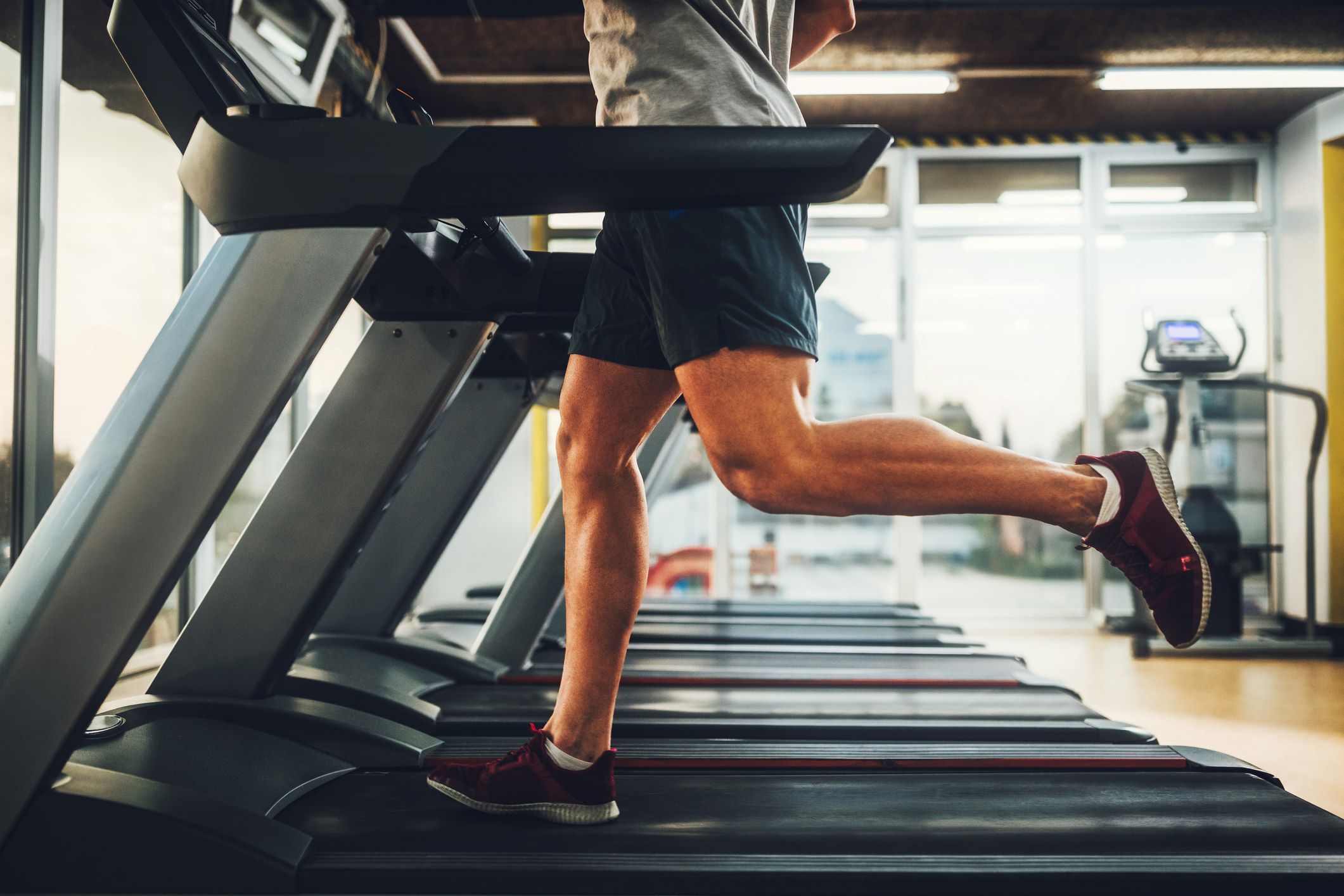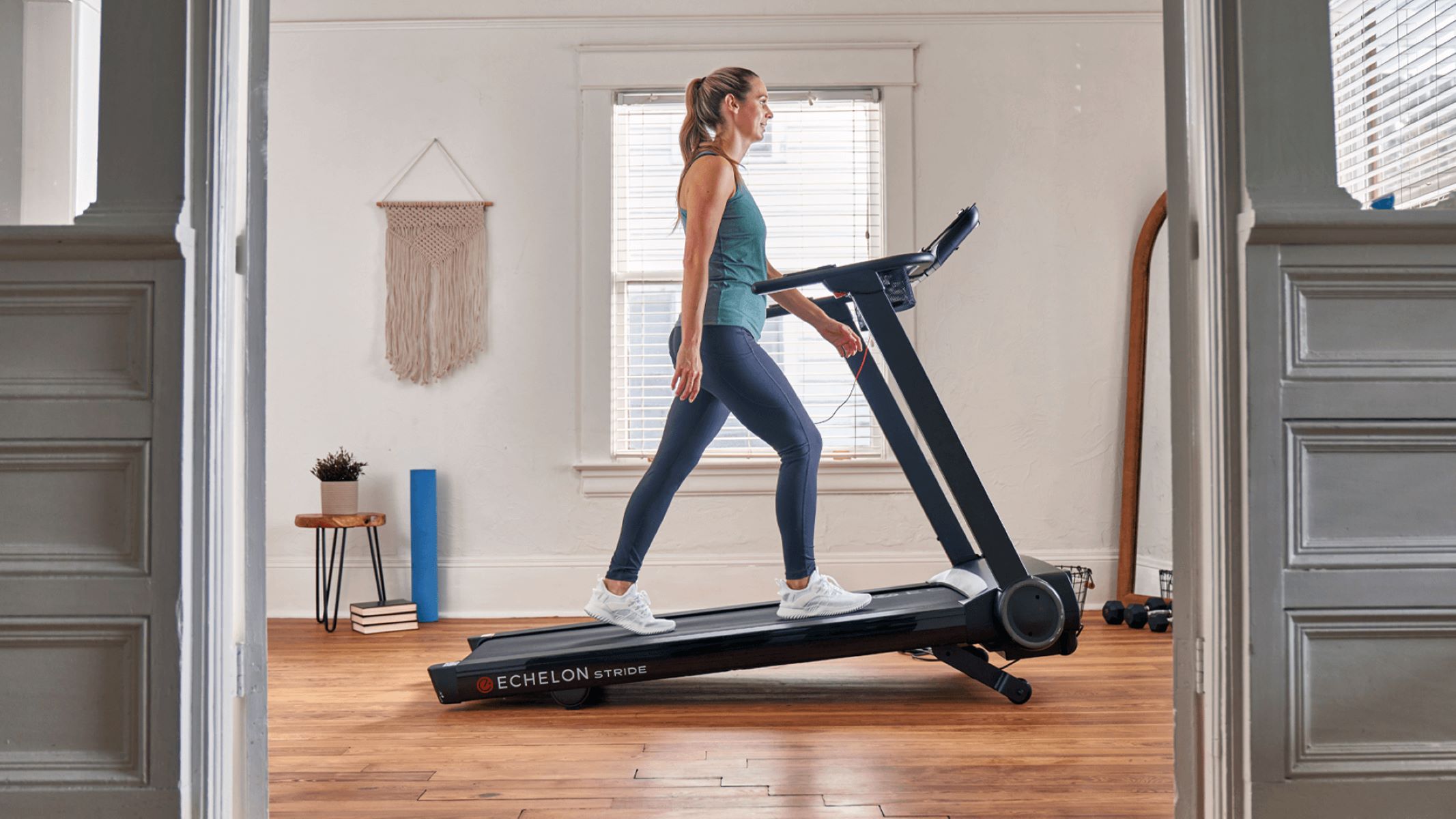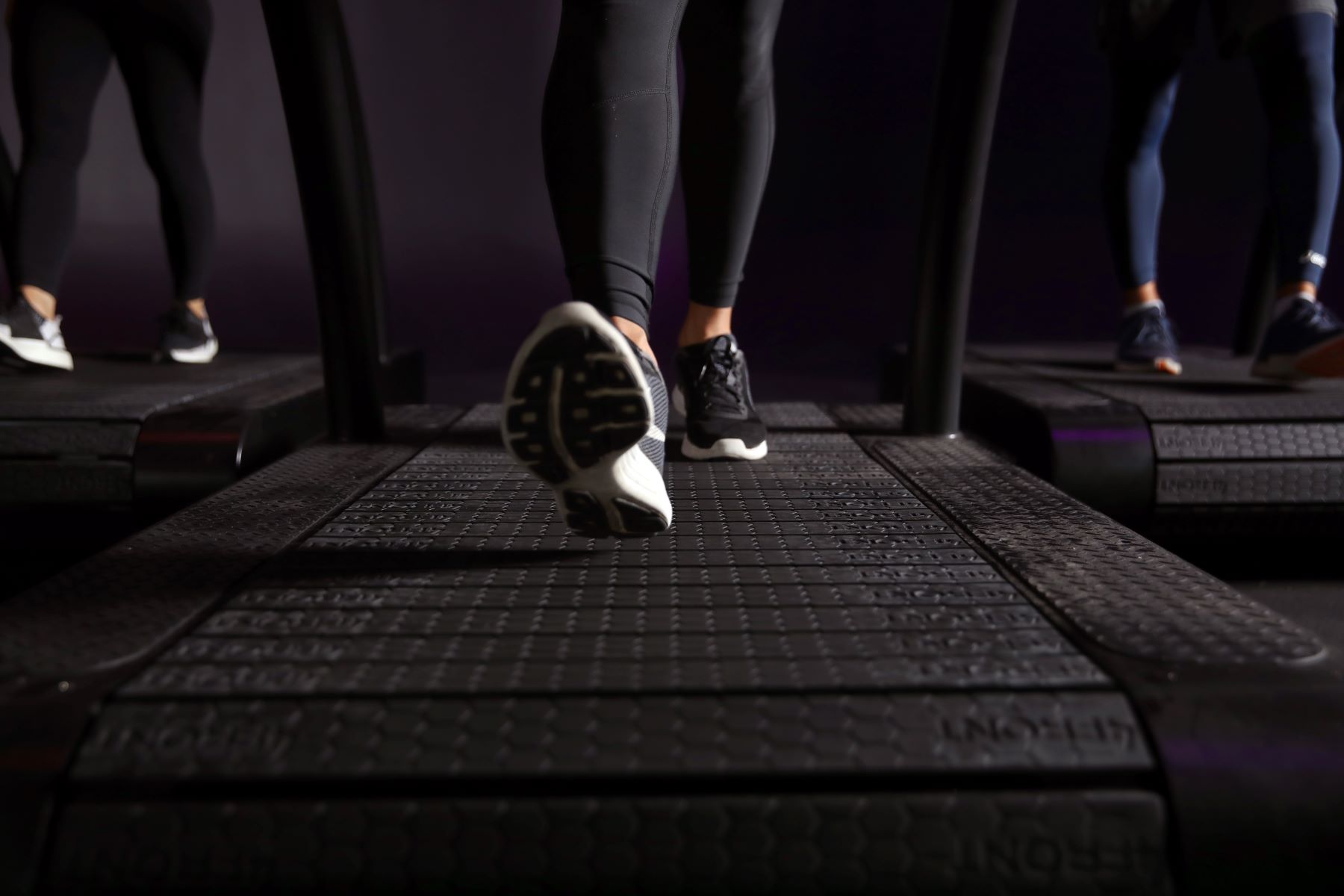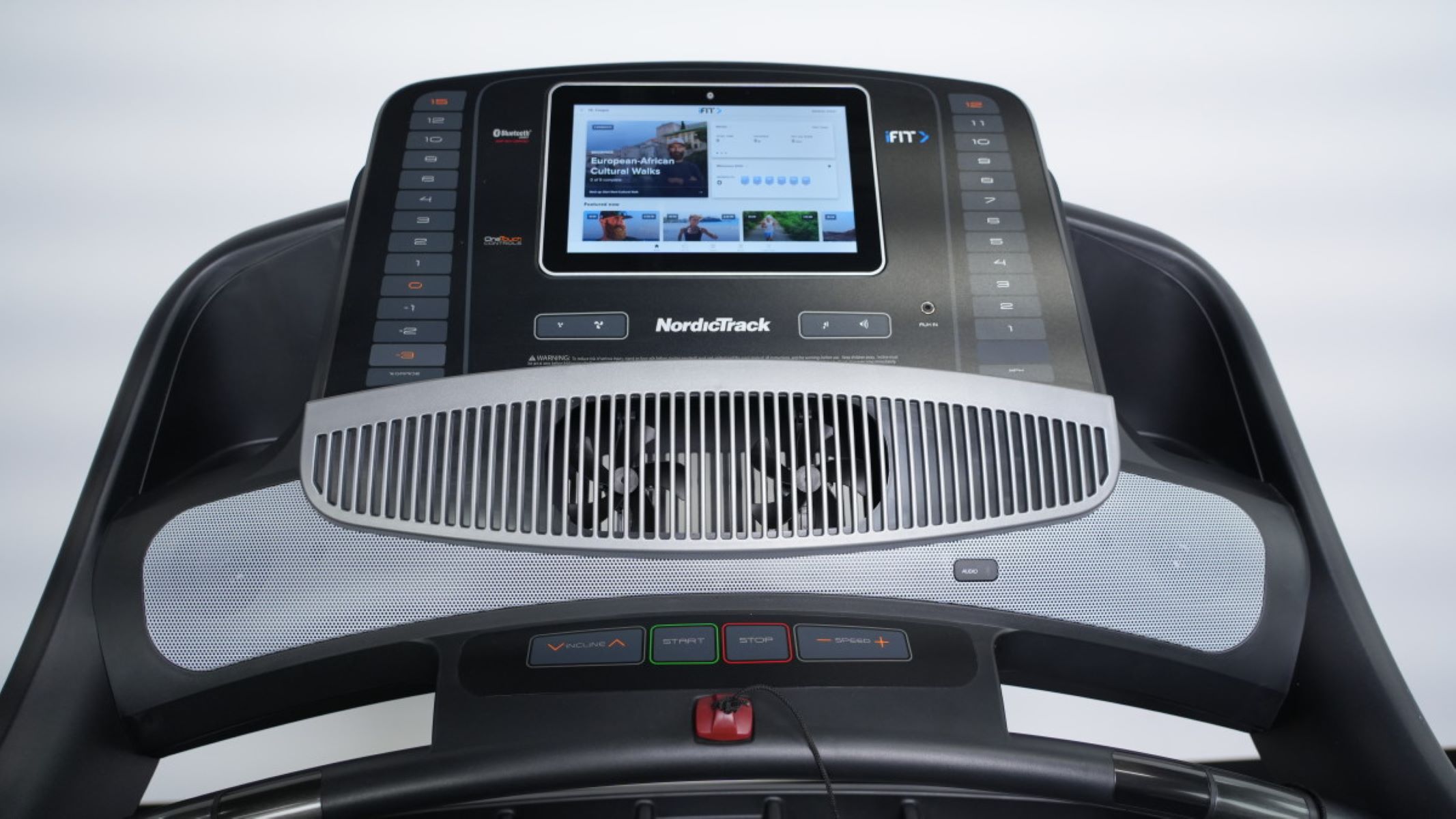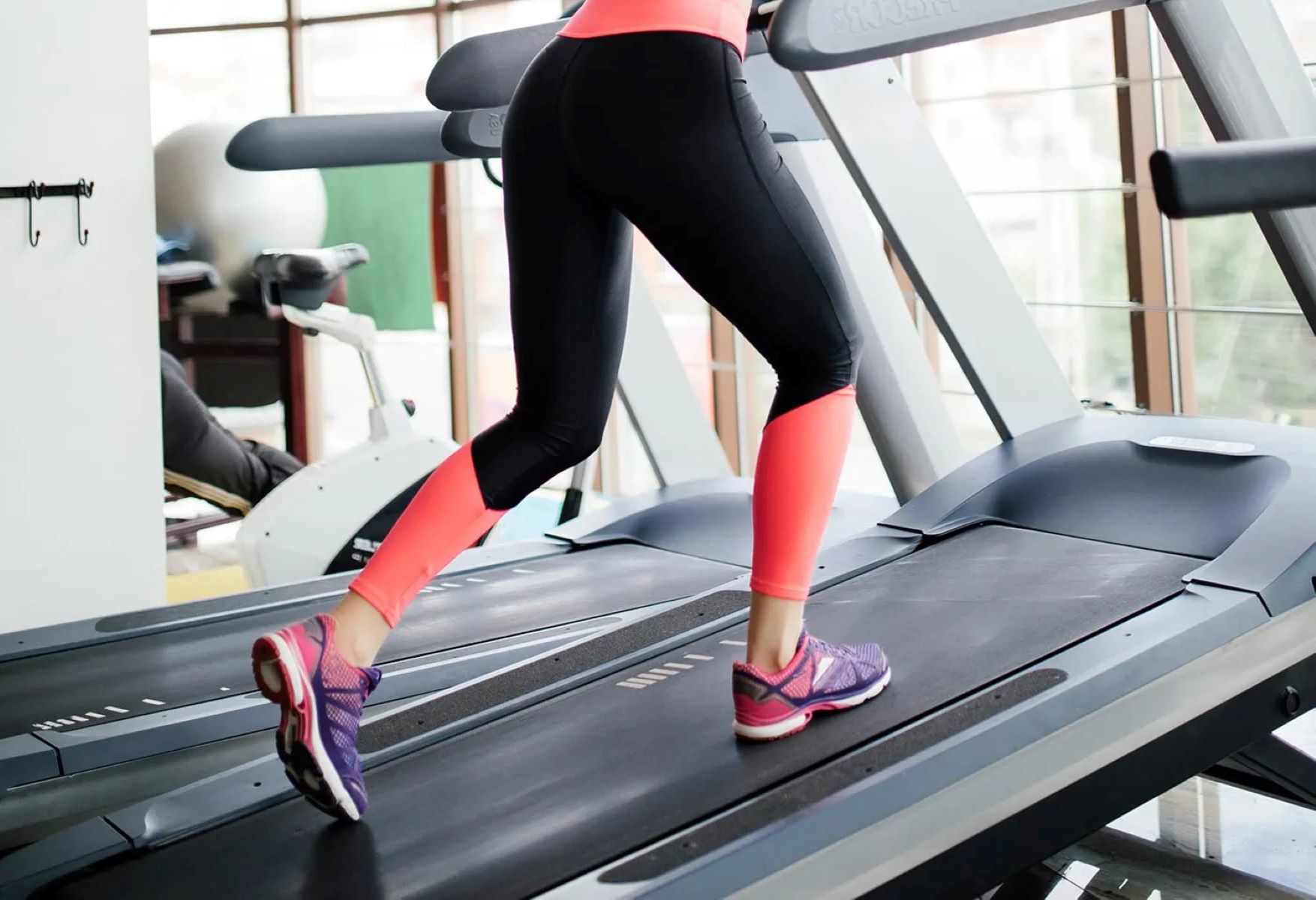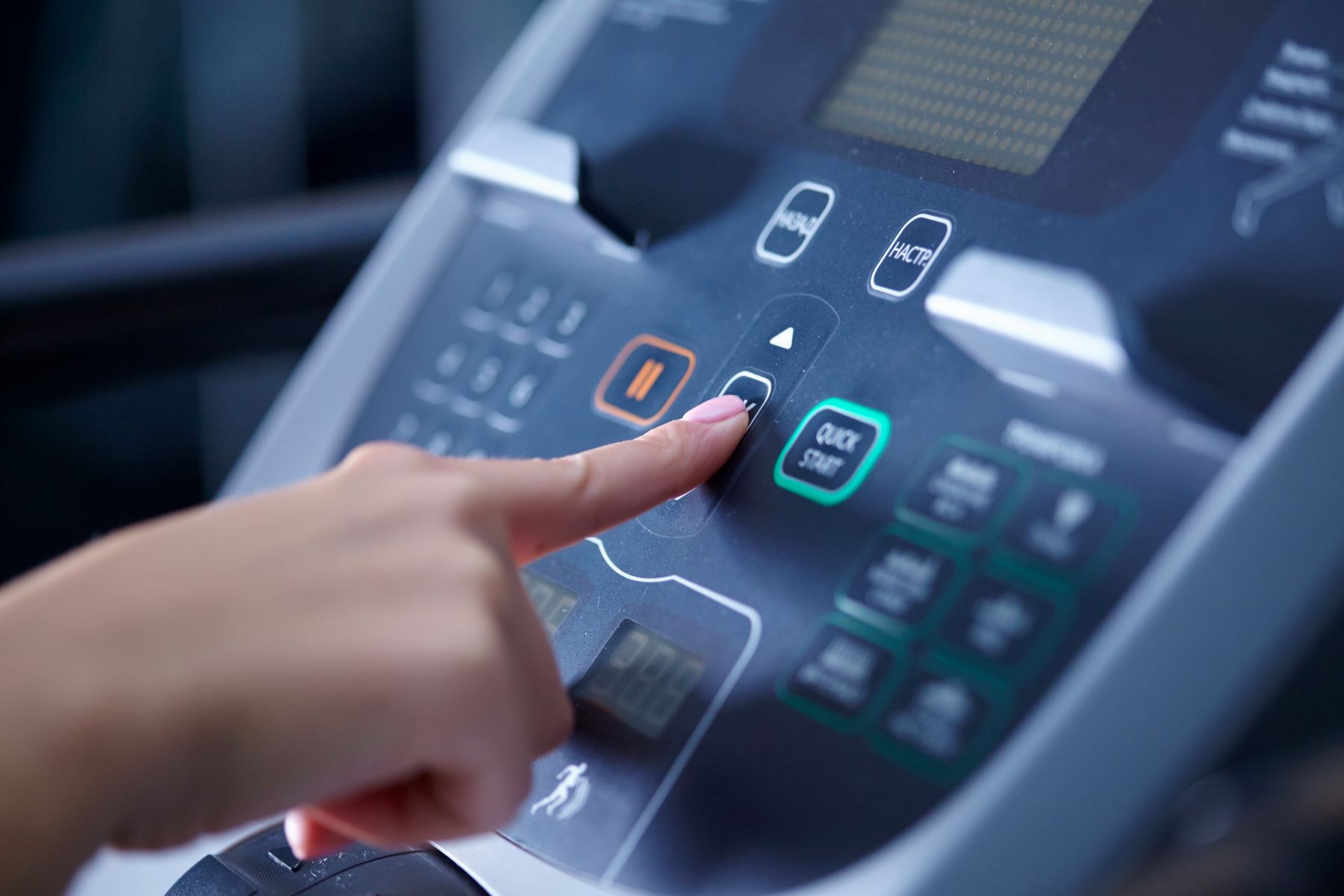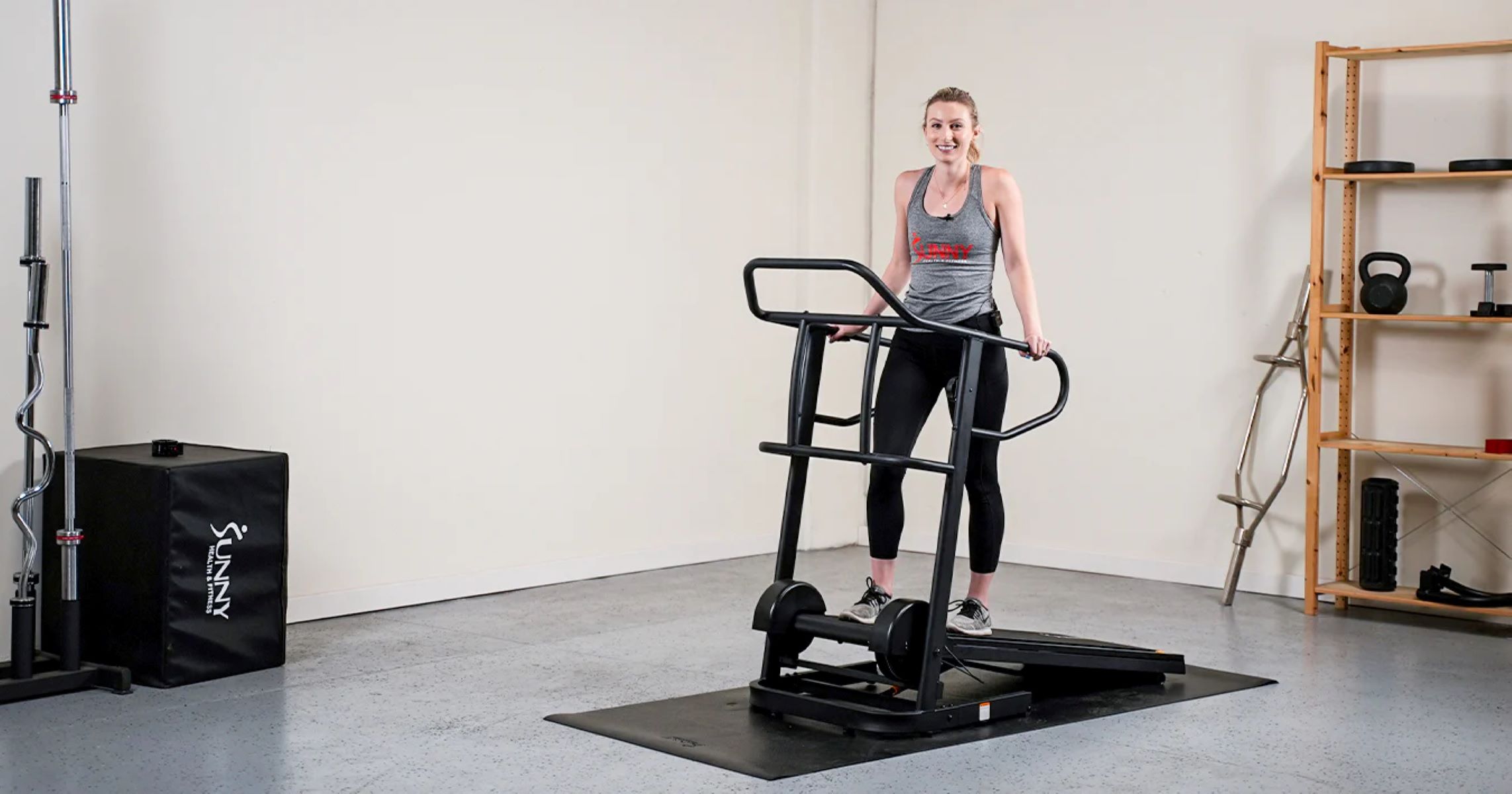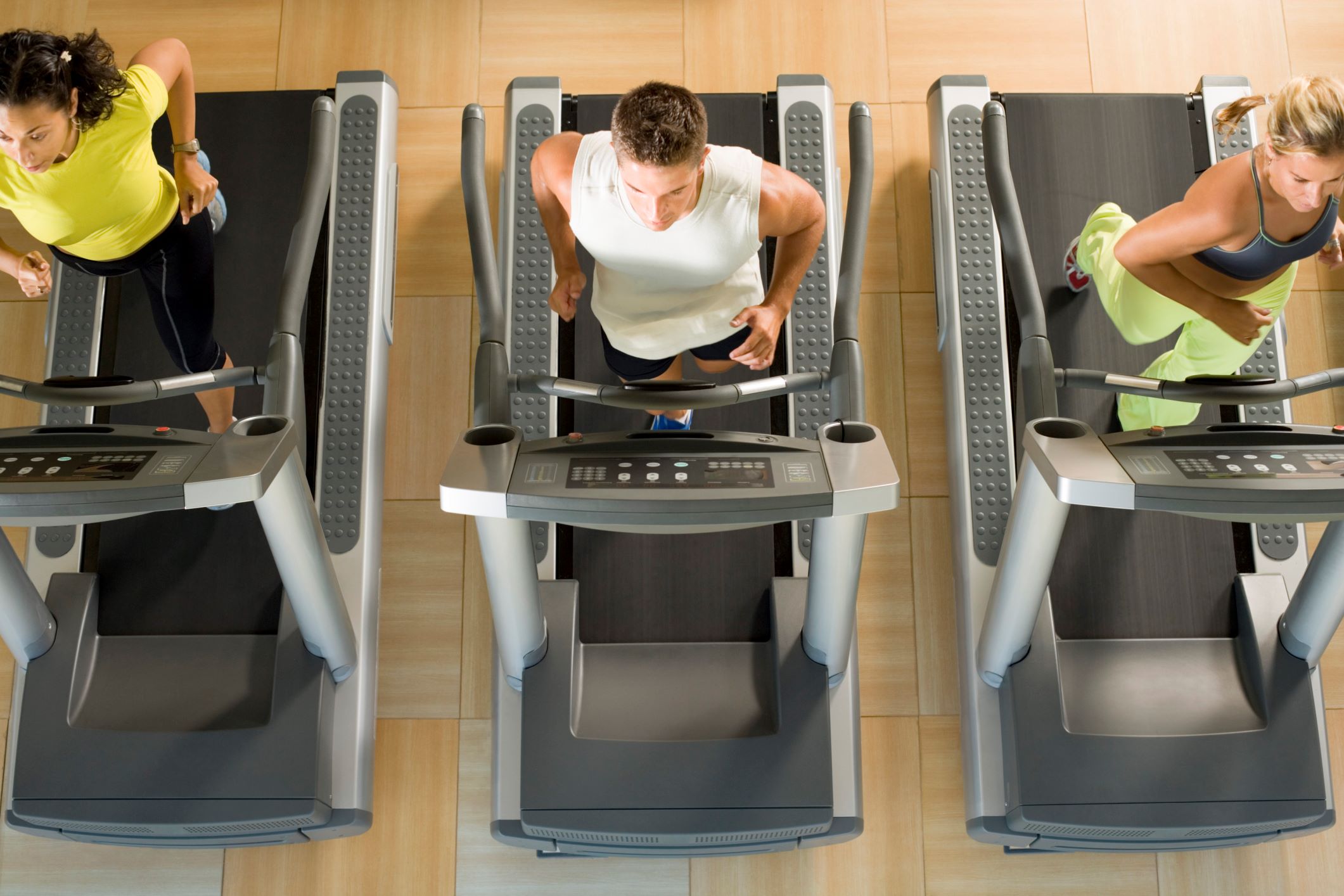

Featured
How To Burn More Calories On A Treadmill
Modified: March 2, 2024
Discover the best way to burn the most calories on a treadmill with our featured guide. Maximize your workout and achieve your fitness goals faster.
Introduction
Welcome to the world of treadmills, where you can burn calories and work towards your fitness goals from the comfort of your own home or the local gym. Whether you’re a beginner or an experienced runner, using a treadmill can be an effective way to shed those extra pounds and improve your cardiovascular health.
But how do you maximize your calorie burn on a treadmill? In this article, we’ll explore various treadmill workouts and techniques that can help you burn the most calories during your training sessions.
Before we delve into the specifics, it’s important to understand the concept of calorie burning. Calories are a unit of energy, and the number of calories you burn during a workout depends on various factors, including your weight, intensity of exercise, and duration of the workout. The more calories you burn, the more likely you are to lose weight and achieve your fitness goals.
Next, let’s take a look at the different types of treadmill workouts that can help you maximize your calorie burn. By incorporating various techniques, you can keep your workouts challenging, interesting, and most importantly, effective in torching those calories.
Understanding Calorie Burning
Before we dive into the specific treadmill workouts, it’s important to have a good understanding of how calorie burning works. Calories are a measure of energy, and the number of calories burned during exercise depends on several factors, including your weight, intensity of the workout, and duration of the activity. By understanding these factors, you can make more informed choices about your treadmill workouts and maximize your calorie burn.
Weight plays a significant role in calorie burning. Generally, the more you weigh, the more calories you will burn during a workout. This is because it takes more energy to move a heavier body. In contrast, a lighter individual will burn fewer calories for the same exercise duration and intensity.
Intensity is another crucial factor. Higher-intensity workouts, such as running or fast-paced interval training, burn more calories compared to lower-intensity activities like walking or jogging. This is because intense exercises require more effort and engage more muscles, resulting in a higher calorie burn.
Duration determines the total calorie expenditure. The longer you exercise, the more calories you will burn. However, it’s essential to strike a balance between duration and intensity. A shorter, high-intensity workout can be just as effective, if not more, than a longer, low-intensity workout. This is where the concept of interval training comes into play.
Interval training involves alternating between periods of high-intensity exercise and recovery or low-intensity activity. For example, you can try sprinting for 30 seconds, followed by a 90-second walk or jog. This method boosts your metabolic rate, keeps your body guessing, and helps you burn more calories both during and after your workout.
In addition to intensity and duration, it’s important to listen to your body and not push yourself too hard. Over-exertion can lead to injury and decrease the effectiveness of your workouts. Gradually increase the intensity and duration of your sessions to allow your body to adapt and progress safely.
Now that we have a firm understanding of calorie burning, let’s explore the different types of treadmill workouts that can help you burn the most calories and achieve your fitness goals.
Types of Treadmill Workouts
When it comes to treadmill workouts, there are several options to choose from depending on your fitness level, goals, and personal preferences. Let’s explore some of the most effective and calorie-burning treadmill workouts:
- Steady-State Cardio: This is a classic treadmill workout where you maintain a steady pace or speed throughout the session. Whether you choose walking, jogging, or running, this workout focuses on aerobic endurance and helps you burn a significant amount of calories over an extended period. To challenge yourself, gradually increase the speed or incline.
- High-Intensity Interval Training (HIIT): HIIT involves short bursts of intense effort followed by short recovery periods. It’s a highly effective calorie-burning workout that helps increase metabolism and build cardiovascular fitness. For example, alternate between 30 seconds of sprinting and 60 seconds of walking or jogging. Repeat for several rounds to maximize calorie burn.
- Incline Training: By adjusting the incline of the treadmill, you can simulate uphill running or walking, which increases the intensity and calorie burn. Incline training engages more muscles, especially your glutes and hamstrings. Start with a moderate incline and gradually increase it as your fitness level improves.
- Speed Intervals: Similar to HIIT, speed intervals involve alternating between short bursts of maximum effort and periods of recovery. Instead of focusing on the incline, this workout emphasizes increasing your speed. For example, sprint for 1 minute then recover by jogging for 2 minutes. Repeat this cycle for the desired duration of your workout.
- Incorporating Strength Training: Use the treadmill as a platform for incorporating strength exercises into your routine. For example, perform walking lunges, side shuffles, or walking planks. This not only helps burn calories but also strengthens and tones your muscles.
Remember, the key to maximizing calorie burn is to mix up your workouts and challenge your body in different ways. Feel free to experiment with different combinations and find what works best for you. Let’s move on to the next section and explore the proper warm-up and preparations before starting your treadmill workout.
Proper Warm-up and Preparations
Before diving into your treadmill workout, it’s crucial to properly warm up your body and make necessary preparations to avoid injury and optimize your performance. Here are some essential steps to follow:
- Dynamic Stretching: Begin your warm-up with dynamic stretching exercises that involve active movements, such as leg swings, arm circles, and hip rotations. This helps increase blood flow to your muscles, increase flexibility, and prepare your body for the upcoming workout.
- Gradual Increase in Intensity: Start your treadmill session with a slow pace or walk for a few minutes to gradually increase your heart rate and warm up your muscles. This allows your body to adjust to the exercise and reduces the risk of injuries.
- Proper Footwear: Wear appropriate shoes that provide good support and cushioning to protect your feet and joints. This is especially important when engaging in high-impact exercises like running or intense interval training.
- Hydration: Ensure you’re well hydrated before starting your treadmill workout. Drink water or a sports drink to replenish fluids and prevent dehydration. Remember to hydrate throughout your session as well.
- Proper Posture and Technique: Maintain a neutral spine and engage your core muscles while running or walking on the treadmill. This helps prevent strain on your back and ensures proper alignment. Avoid leaning on the handrails as it can interfere with your natural stride and reduce the effectiveness of the workout.
- Mental Preparation: Set clear goals and visualize yourself completing a successful workout. This positive mindset can motivate you to push harder and maintain your focus throughout the session.
By following these warm-up and preparation guidelines, you’ll be ready to tackle your treadmill workout with confidence and minimize the risk of injuries. Now that we’re properly prepared, let’s explore one of the most effective treadmill workouts – High-Intensity Interval Training (HIIT).
HIIT (High-Intensity Interval Training)
High-Intensity Interval Training (HIIT) has gained immense popularity for its effectiveness in burning calories and improving cardiovascular fitness. This type of workout involves alternating between short bursts of intense exercise and periods of active recovery or rest. HIIT is not only time-efficient but also provides a powerful calorie-burning and metabolism-boosting effect.
Here’s a step-by-step guide to incorporating HIIT into your treadmill workout:
- Warm-up: Begin with a 5-10 minute warm-up, gradually increasing your speed or incline to raise your heart rate and prepare your body for the intense intervals.
- Interval Period: Start with a high-intensity interval of 30 seconds to 1 minute, where you sprint or run at your maximum effort. Push yourself to reach a challenging pace during this period.
- Recovery Period: Follow the high-intensity interval with a recovery period of 1-2 minutes, where you walk or jog at a comfortable pace. Use this time to catch your breath and lower your heart rate.
- Repeat: Repeat the interval and recovery cycle for a total of 8-10 rounds or as desired. As you progress, you can increase the number of rounds or the duration of each interval.
- Cool-down: Finish your HIIT treadmill workout with a 5-10 minute cool-down, gradually decreasing your speed and incline to allow your heart rate to return to normal. This helps prevent dizziness and supports muscle recovery.
Remember to listen to your body and adjust the intensity and duration of the intervals based on your fitness level. HIIT can be tailored to suit beginners as well as advanced exercisers.
HIIT offers several benefits beyond calorie burning. It helps improve cardiovascular endurance, boosts metabolism, and can even continue to burn calories after your workout, thanks to the “afterburn effect” or excess post-exercise oxygen consumption (EPOC). This means your body continues to burn calories at an elevated rate even during rest and recovery.
However, it’s important to note that HIIT workouts are demanding and may not be suitable for everyone. If you have any underlying health conditions or are new to exercise, it’s advisable to consult with a healthcare professional or a certified personal trainer before incorporating high-intensity workouts into your routine.
Now that we’ve explored the benefits and techniques of HIIT, let’s move on to another effective method – incline training, which can help you burn more calories and target specific muscle groups.
Incline Training
Incline training on a treadmill is an excellent way to challenge your muscles, increase calorie burn, and simulate uphill running or hiking. By adjusting the incline, you can target different muscle groups, intensify your workouts, and make your treadmill sessions more effective.
Here are some tips to incorporate incline training into your treadmill workouts:
- Warm-up: Start with a 5-10 minute warm-up at a moderate pace and zero incline. This allows your muscles to loosen up and prepares your body for the workout ahead.
- Gradual Incline Increase: Begin with a slight incline, around 3-5%, and gradually increase it as your fitness level improves. Aim to challenge yourself, but avoid setting the incline too high, as it may strain your muscles or joints.
- Vary the Incline: Mix up your incline levels during your workout. You can alternate between higher inclines for short bursts and lower inclines for recovery periods. This keeps your muscles engaged and adds variety to your routine.
- Interval Training: Combine incline training with interval training to increase the intensity and calorie burn. Alternate between periods of running or jogging at a steep incline and recovery periods at a lower incline or flat surface.
- Focus on Form: Pay attention to your posture and form while running or walking on an incline. Keep your back straight, engage your core, and avoid leaning on the handrails. This helps maintain a natural and efficient stride.
- Cool-down: Finish your incline training session with a 5-10 minute cool-down, gradually decreasing the incline and slowing down your pace. This helps lower your heart rate and promote muscle recovery.
Incline training provides various benefits. It increases the intensity of your workouts, which in turn boosts calorie burn and improves cardiovascular endurance. Additionally, it targets specific muscle groups, such as your glutes, hamstrings, and calves, helping to tone and strengthen these areas.
Remember to listen to your body and adjust the incline level based on your fitness level and goals. If you’re new to incline training, start with a lower incline and gradually progress over time.
Now that we’ve explored the benefits of incline training, let’s move on to another effective method – speed intervals, which can help you increase your pace, challenge your cardiovascular capacity, and burn more calories.
Speed Intervals
If you’re looking to boost your speed, improve your cardiovascular capacity, and burn more calories on the treadmill, incorporating speed intervals into your workout routine is an excellent strategy. Speed intervals involve alternating between periods of high-speed running and active recovery or slower-paced jogging or walking.
Here’s how you can incorporate speed intervals into your treadmill workouts:
- Warm-up: Begin with a 5-10 minute warm-up at a comfortable pace to prepare your muscles for the upcoming high-intensity intervals.
- Interval Period: Increase the speed on the treadmill to a challenging pace or sprint for a specific time, such as 30 seconds to 1 minute. Push yourself to reach your maximum effort during these high-intensity intervals.
- Recovery Period: Following the interval, reduce the speed to a comfortable jogging or walking pace for a recovery period of 1-2 minutes. Use this time to catch your breath and recover before the next high-speed interval.
- Repeat: Continue alternating between high-speed intervals and recovery periods for a total of 8-10 rounds or as desired. Gradually increase the duration of the high-speed intervals as your fitness level improves.
- Cooldown: Conclude your speed interval workout with a 5-10 minute cooldown, gradually decreasing your speed to allow your heart rate to return to normal. This helps prevent dizziness and promotes muscle recovery.
Speed intervals offer several benefits. They help increase your speed and running efficiency, improve cardiovascular endurance, and burn more calories in a shorter amount of time. Additionally, these intervals can help you break through performance plateaus and add variety to your treadmill workouts.
It’s important to listen to your body and adjust the speed and duration of the intervals based on your fitness level and goals. Start with a moderate pace and gradually increase the speed as you feel more comfortable and confident.
Remember to maintain proper form and posture while running at higher speeds. Engage your core, keep your back straight, and focus on a smooth and efficient stride.
Now that we’ve explored the benefits and techniques of speed intervals, let’s move on to another valuable strategy – incorporating strength training exercises into your treadmill workouts.
Incorporating Strength Training
When it comes to treadmill workouts, it’s not just about cardio and burning calories. You can also incorporate strength training exercises to make your sessions more well-rounded and effective. By combining cardiovascular exercise with strength training, you can boost your calorie burn, build lean muscle, and improve overall strength and endurance.
Here are some tips for incorporating strength training into your treadmill workouts:
- Multitask: Use the treadmill as a platform to perform various strength exercises. These can include walking lunges, side shuffles, squat jumps, or walking planks. Engaging in these exercises challenges different muscle groups and can significantly increase calorie burn.
- Interval Method: Alternate between periods of running or jogging on the treadmill and performing strength exercises off the treadmill. For example, run for one minute and then step off the treadmill to do a set of push-ups or squats. This combination helps target both cardiovascular fitness and muscle strength.
- Weighted Vest or Dumbbells: Consider wearing a weighted vest or holding light dumbbells while performing treadmill exercises. This adds resistance and intensifies the workout, allowing you to incorporate strength training into your cardio routine.
- Focus on Form: Pay attention to your form while performing strength exercises on or off the treadmill. Maintain proper posture, engage your core, and use controlled movements. This ensures safety and maximizes the effectiveness of the exercise.
- Gradual Progression: Start with a lighter weight or easier variation of the strength exercises and gradually increase the intensity or resistance over time. This allows your muscles to adapt and grow stronger, minimizing the risk of injuries.
Incorporating strength training into your treadmill workouts not only helps you burn more calories but also helps improve muscle tone, strength, and overall body composition. It provides a comprehensive approach to fitness and can be customized to your specific needs and goals.
Remember to consult with a fitness professional or trainer if you’re new to strength training. They can guide you through proper form and technique and help you develop a well-balanced treadmill workout routine.
Now that we’ve explored the benefits and techniques of incorporating strength training, let’s move on to the importance of monitoring heart rate during your treadmill workouts.
Monitoring Heart Rate
Monitoring your heart rate during treadmill workouts is essential to ensure that you are exercising at the right intensity for optimal calorie burn and cardiovascular benefits. By understanding and maintaining your target heart rate zone, you can make the most out of your workouts and achieve your fitness goals more effectively.
Here are some key points to consider when monitoring your heart rate:
- Calculate Your Maximum Heart Rate: To determine your target heart rate zones, you need to calculate your maximum heart rate (MHR). Subtract your age from 220 to estimate your MHR. For example, if you are 30 years old, your estimated MHR would be 190 beats per minute (bpm).
- Identify Your Target Heart Rate Zones: Your target heart rate zones are different intensity levels based on a percentage of your MHR. The American Heart Association recommends exercising in the following zones:
- Moderate Intensity: 50-70% of your MHR
- Vigorous Intensity: 70-85% of your MHR
- Monitoring Methods: There are several methods to monitor your heart rate during a treadmill workout. The most common methods include using a heart rate monitor, wearable fitness tracker, or using the heart rate monitor feature on some treadmills. Choose the method that is most convenient and comfortable for you.
- Check Your Heart Rate During the Workout: Periodically check your heart rate during your treadmill session to ensure that you are staying within your target heart rate zone. Adjust the intensity of your workout if necessary to stay within the desired zone.
- Listen to Your Body: In addition to monitoring your heart rate, listen to your body and pay attention to how you feel during the workout. If you’re struggling to breathe or feeling lightheaded, it may be a sign that you are pushing yourself too hard. Adjust the intensity or take a break if needed.
- Gradually Increase Intensity: As your fitness level improves, you can gradually increase the intensity of your workouts to challenge yourself and reach higher heart rate zones. This progression will help improve cardiovascular fitness over time.
Monitoring your heart rate during treadmill workouts allows you to gauge the effectiveness of your training and ensure that you are working within the appropriate intensity levels. It helps you find the right balance between pushing yourself and maintaining a safe exercise experience.
Remember, consult with a healthcare professional or fitness expert if you have any underlying health concerns or have specific goals in mind. They can provide personalized guidance regarding target heart rate zones and help you create an effective treadmill workout plan.
Now that we’ve explored the importance of monitoring heart rate, let’s move on to the final section – cooling down and stretching for a proper post-workout routine.
Cooling Down and Stretching
After an intense treadmill workout, it’s crucial to cool down and stretch to promote muscle recovery and prevent post-workout soreness. Cooling down and stretching not only helps your body transition from exercise to rest but also aids in maintaining flexibility and preventing injuries. Here’s a guide to a proper cooldown and stretching routine:
- Cool-down: Gradually reduce the intensity of your treadmill workout by decreasing the speed and incline. This allows your heart rate to gradually return to its resting state. Continue walking or slow jogging for about 5-10 minutes.
- Deep Breathing: Focus on deep, controlled breathing during the cool-down phase. Inhale deeply through your nose, hold the breath for a few seconds, and then exhale slowly through your mouth. This helps relax your body and promote a sense of calm.
- Static Stretching: Once your heart rate has lowered, it’s time to incorporate static stretching. Stretch the major muscle groups used during your workout, such as the calves, quadriceps, hamstrings, and glutes. Hold each stretch for about 20-30 seconds and remember to breathe deeply while doing so.
- Foam Rolling: Consider using a foam roller to further release muscle tension and tightness. Roll over your major muscle groups, applying gentle pressure to help increase flexibility and reduce muscle soreness. Focus on areas that feel particularly tight or tender.
- Dynamic Stretching: After static stretching and foam rolling, incorporate some dynamic stretches to further improve flexibility and increase blood flow to the muscles. These can include leg swings, arm circles, or walking lunges.
- Hydration: Rehydrate your body by drinking water or a sports drink. It’s essential to replenish the fluids lost during your workout to support muscle recovery and prevent dehydration.
Cooling down and stretching not only aid in muscle recovery but also promote flexibility, prevent muscle imbalances, and improve overall athletic performance. This post-workout routine can help reduce muscle soreness and stiffness, allowing you to get back to your treadmill workouts faster and with less discomfort.
Remember to always listen to your body and adjust the intensity and duration of your cooldown and stretching based on your individual needs and fitness level. If you experience any pain or discomfort during stretching, ease off or consult with a fitness professional or physical therapist.
By incorporating a proper cooldown and stretching routine into your treadmill workouts, you’re taking a proactive step towards long-term fitness and injury prevention.
Now that we’ve completed the final section, you have a comprehensive understanding of various treadmill workouts, warm-up and preparation techniques, interval training methods, strength training integration, heart rate monitoring, and cooldown routines. Armed with this knowledge, you can maximize your calorie burn and make the most out of your treadmill sessions. So, lace up your running shoes, hop on the treadmill, and get ready to achieve your fitness goals!
Conclusion
Congratulations! You’ve reached the end of our comprehensive guide on how to burn the most calories on a treadmill. Throughout this article, we’ve explored various treadmill workouts, discussed the importance of proper warm-up and preparations, delved into the benefits of HIIT, incline training, speed intervals, and incorporating strength training. We also emphasized the significance of monitoring heart rate and engaging in a proper cooldown and stretching routine.
By incorporating these strategies into your treadmill workouts, you can effectively burn calories, improve cardiovascular health, build muscle strength, and achieve your fitness goals.
Remember to adjust the intensity and duration of your workouts based on your fitness level and gradually progress as your body adapts. Pay attention to your body’s signals and listen to any discomfort or pain, making necessary adjustments or seeking professional guidance if needed.
Lastly, consistency is key. Stick to a regular exercise routine that includes treadmill workouts, and make it a habit. Remember that results take time, and staying dedicated and motivated is the secret to long-term success.
So, whether you’re a beginner or an experienced athlete, it’s time to put on your running shoes, hop on that treadmill, and start torching those calories. With the knowledge and strategies outlined in this guide, you’re equipped to make the most out of your treadmill workouts and achieve the fitness results you desire.
Get ready to sweat, push your limits, and watch as the calories melt away. Happy running!
